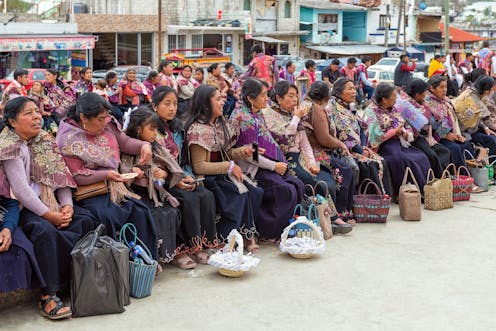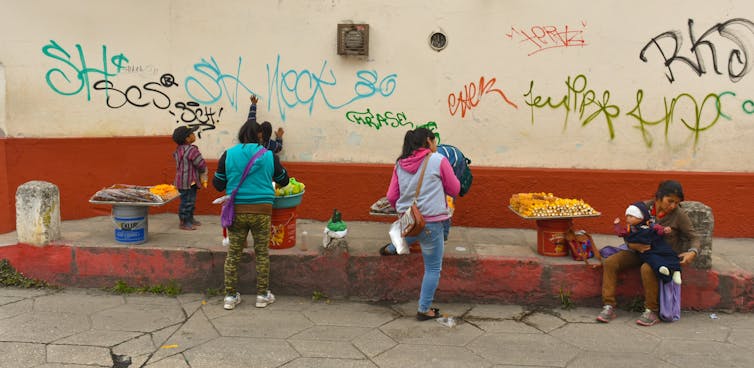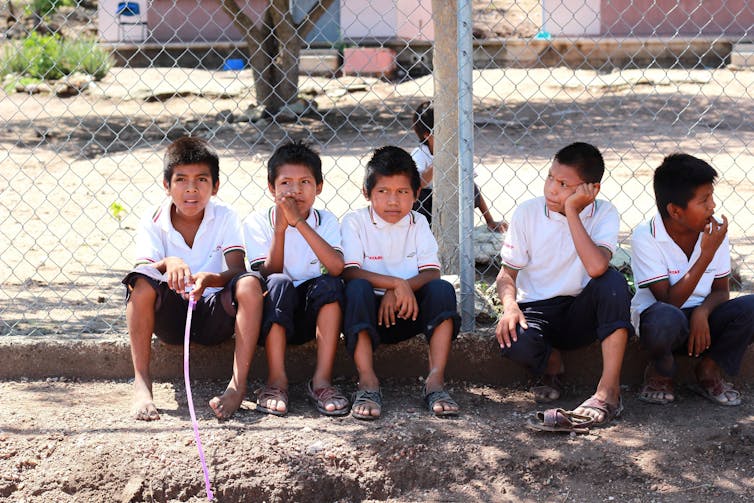
Being able to speak the dominant language wherever you are in the world has long been shown to be economically beneficial. This is particularly the case when you’re looking for work.
Being able to speak global languages can also help to secure a job in export-oriented sectors or in the civil service. The benefits accrued, for instance, by being an English speaker in India – what sociolinguists term the “English premium” – are well documented.
However, when it comes to minority languages, and especially indigenous ones, economic benefits are rarely mentioned. It is often taken as granted that it is precisely the lack of economic opportunities that drive the language shift – the adoption of economically dominant languages from one generation to another.

Sociolinguists suggest that within the next century, 90% of the world’s languages will disappear. This shift is mostly driven by larger, often colonial, languages dominating economies, educational systems and state governance.
In a recent study, we looked at minority languages in Mexico, most of which are in decline, with persistent pockets of resistance. We found that, even with minimal state support, languages can sustain themselves within tight social networks and specialised labour markets.
Economic benefits
Before Spain colonised Mexico in the 15th century, there were an estimated 350 indigenous languages. In 1820, about 60% of the population in Mexico still spoke them.
The 19th century saw that figure drop substantially. By 1930, it stood at 38%. By 2020, it stood at only 5.8%. Experts estimate that 282of these indigenous languages have now disappeared. Of the 68 that have survived, the three most spoken are Náhuatl, Maya and Tzeltal, accounting for 1.44%, 0.72% and 0.46% of the population, respectively.

In most countries, measuring the economic benefits of minority languages can be difficult because they are typically spoken by ethnic minorities, who are on average poorer than the majority. This is also the case in Mexico. However, in other countries it is often difficult to access the data needed to compare language transmission across generations, while the Mexican census documents the passage of languages within families. It also asks respondents for both ethnicity and knowledge of language.
For our study, we focused on 34 native languages, including Nahuatl, Maya, Tzeltal, Mixteco, Tzotzil, Tarahumara, Mayo and Cora. We augmented census data from 2000, 2010 and 2015 with household surveys from 2014-2018. We created tightly matched comparison groups of indigenous minority people who have maintained their bilingualism. We compared them to similar local indigenous people who have given up the minority language and speak only Spanish.
This comparison reveals that men who are bilingual, have a two percentage point higher likelihood of being employed. Their wages are also 5% higher, on average. This was not a quirk driven by a particular group. Of those 34 indigenous languages, 16 were found to have statistically significant positive employment benefits.

The finding goes against the view that indigenous minority languages have no economic worth. We found that employment benefits mostly originate from agriculture, crafts and other traditional occupations. We also found economic benefits appearing at the top end of the educational scale, as some highly educated indigenous people are more likely to be employed due to their bilingualism.
Language transmission
We then examined data about more than 200,000 bilingual families from Mexican censuses to identify patterns in how parents transmit language to their children. The data shows how language transmission is influenced mostly by family structure and social environment. But we also discovered that in rural areas, if the local indigenous language skill is estimated to improve employment prospects, the language is also more likely to be passed from one generation to another.
If both parents can speak the indigenous language, they have a 73% likelihood of transmitting the language to children. If either parent speaks only Spanish, the likelihood of transmission drops to only 5-8%. This highlighted the vulnerability of minority languages in mixed marriages.
Another important factor is how many native language speakers there are in the locality or in the household, such as grandparents. The more there are, the more likely it is that the language will be passed on to the next generation.
We also found that in rural areas, where 68% of the indigenous people live, those indigenous languages that provide more employment opportunities are also more likely to be passed to the next generation.
Most indigenous languages in Mexico are used only at elementary levels in education, and government services are rarely provided in these languages.
Whether a language survives or dies out depends largely on its network – the degree to which it is transmitted. State support can also make a big difference, particularly if, as our results suggest, it focuses on the economic opportunities that knowledge of the language brings.
The authors do not work for, consult, own shares in or receive funding from any company or organisation that would benefit from this article, and have disclosed no relevant affiliations beyond their academic appointment.
This article was originally published on The Conversation. Read the original article.







